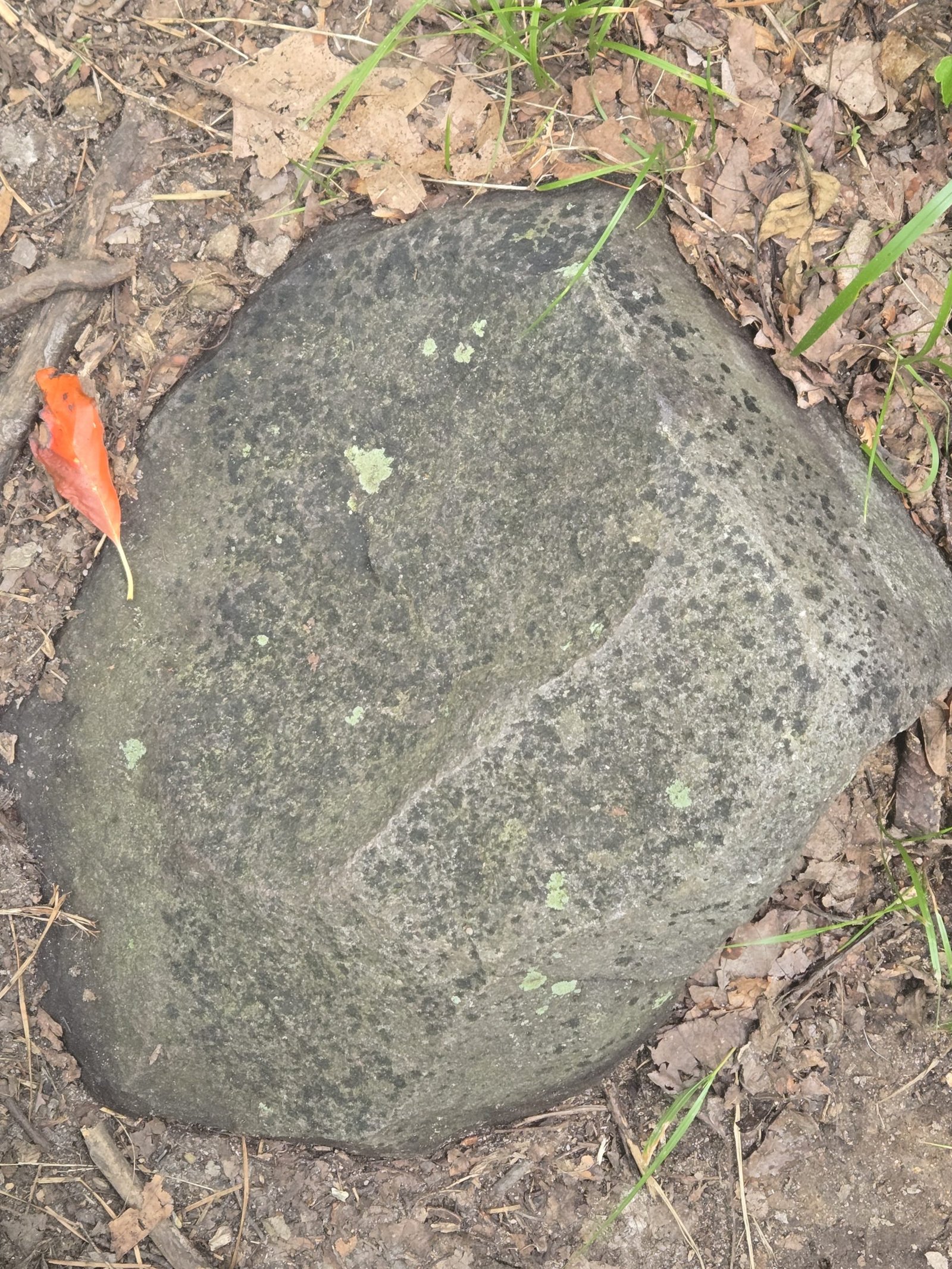Published August 3, 2025 12:40AM
Destinations & Things To Do
The Ultimate Scottish Adventure: Top Five Destinations to Visit from Highlands to Islay

Wednesday, July 30, 2025
Five best places to visit in scotland , Edinburgh, Isle of Skye, Highlands, Glasgow and Whisky trail
With beautiful countryside, a rich history and vibrant culture, Scotland has something for every type of traveller. Scotland Whether you are wandering the historical streets of Edinburgh, hiking wild mountain ranges in The Highlands or enjoying a whisky tour at the Whisky Trail, Scotland is a country that will catch the hearts of visitors all over the world, irrespective of their passion Travel Europe. Here’s an in-depth guide to five favourite places in Scotland.
Edinburgh: Scotland’s Historic Capital
Edinburgh One of Scotland’s most historic cities, Edinburgh is the capital of Scotland. The city is known for its preserved old town, gigantic medovalnyomest prolixus, a new town, both its headquarters are registered. A Unesco heritage sight, Edinburgh’s Royal Mile is a cliche but worth a visit with the Castle at one end and Holyroodhouse at the other, home of the British sovereign in Scotland.
There is the National Museum of Scotland, the Scottish National Gallery and all sorts of cultural delights to be enjoyed for visitors. Thousands of international performers and spectators flock to the Edinburgh Festival Fringe, the world’s largest arts festival, every year. History buffs will love the chance to explore the nation’s royal past at the Edinburgh Castle and the life of the British royal family by touring the Royal Yacht Britannia.
Edinburgh also has many parks, including Holyrood Park and Princes Street Gardens, perfect for views of Arthur’s Seat, an extinct volcano that boasts impressive views of the city.
Whisky Trail: A Journey Through Scotland’s Whisky Heartlands
Scotland is famous for its whisky and tourists can get up close and personal with how Scotland’s best known drink is made along the Whisky Trail. Sited through Speyside, Islay, the Highlands, Orkney and Jura it links regions as famous for their whiskies as their accents. From the smokiest peaty whiskies to the lightest and most delicate of the dram, whether you take in the Whisky Trail while on tour or not, whisky fans have the opportunity to visit historic distilleries and taste some of the world’s best whiskey.
Speyside Visit one of Speyside’s major player and family owned distilleries, the iconic Glenfiddich Distillery. The Islay Whisky Trail is a journey through ancient distilleries some of the world’s best known brands, such as Laphroaig and Lagavulin and visitors on route will pass striking views, from rolling hills to rugged shorelines, meaning the journey is a feast for both the eyes and the soul.
The Isle of Skye: An island of magic and mystery
The Isle of Skye, on the west coast of Scotland, is known for its stunning scenery of mountains, waterfalls and rugged sea cliffs. The island is a paradise for backpackers, nature enthusiasts, featuring numerous noteworthy sites like the Old Man of Storr a unique rock formation that provides obliging views of the island. Visitors can also find the Fairy Pools, a collection of clear pools and waterfalls that have become popular with hikers and photographers.
Historic castles, including Dunvegan Castle, are a feature of the Isle of Skye, some of which were built centuries ago. By far the largest settlement, Portree is home to a variety of accommodations and restaurants and numerous local shops that make it the perfect place from which to explore the rest of the island. History is plentiful on the island of Skye, with plenty of sites and museums to take in the Viking heritage.
Scottish Highlands – Stunning Landscapes And A Great History
The Scottish Highlands make up the biggest and most spectacular part of Scotland and provide visitors with enormous mountain ranges, deep lochs and tiny villages. With its infamous monster, Loch Ness is one of the most iconic attractions in the Highlands. Tourists can take boat trips out on the loch or visit the Loch Ness Centre and Exhibition to hear local folklore.
The Highlands are also famous for its trekking trails, popular routes include the West Highland Way, which hikers can traverse from rough terrain to spectacular countryside. There is the Cairngorms National Park, a vast area known for wildlife and leisure pursuits including skiing in winter and kayaking in summer.
Inverness city, in the heart of the Highlands, is the gateway to the region. Enjoy the harmony of historic buildings, stone churches and amazing public gardens in Inverness as well as the Ness Islands with footbridges across to them enabling you to stroll near by the River Ness.
Glasgow: Scotland’s Vibrant Cultural Hub
The largest city in Scotland, Glasgow offers a wide variety of modern art, music, and world-famous architectural designs. Glasgow has a background in industrial production but has transformed with the times, becoming a lively, creative city with a range of museums, galleries and live performances to enjoy. The city is also home to Kelvingrove Art Gallery and Museum, with historical and modern collections, the Riverside Museum with displays on Glasgow’s transportation history and George Square, known for its 12 statues of historic figures.
Glasgow Cathedral is a medieval building which provides an insight in the city’s religious past and the Glasgow Science Centre is resplendent with interactive displays for all ages. Glasgow is also known for its vibrant music scene, with over 130 music events each week, ranging from small clubs to huge arenas playing host to international superstars.
(Source : Scotland Tourism.)
Destinations & Things To Do
Traveling to Turkey? Beware of Hidden Dangers in Popular Outdoor Activities and Water Sports

Sunday, August 3, 2025
Turkey, a top destination for UK families and tourists alike, is renowned for its stunning landscapes, rich culture, and warm climate. However, while the country offers an array of outdoor and adventure tourism activities, the Foreign, Commonwealth & Development Office (FCDO) urges travelers to be cautious and properly research their planned activities. From water sports to jeep safaris, there are a number of potential risks that travelers need to be aware of to ensure their holiday stays safe and enjoyable.
For UK travelers planning a family vacation or business trip to Turkey, it’s crucial to be aware of the country’s regional risks. The FCDO provides extensive travel guidance and safety recommendations on their official website, helping travelers make informed decisions about their destinations. The FCDO also emphasizes the importance of obtaining adequate travel insurance, which should cover all planned activities and provide coverage for unexpected emergencies.
Safety Risks in Outdoor Activities
Turkey’s diverse landscapes offer some of the best outdoor adventure experiences, including water sports, hiking, and jeep safaris. However, many of these activities come with inherent risks, particularly if proper precautions are not taken. The FCDO advises that travelers ensure their water sports activities are booked through licensed centers. Before engaging in water activities, it is essential to complete the necessary paperwork, request a safety demonstration, and familiarize yourself with the emergency procedures, including how to call for help.
The Royal Life Saving Society (RLSS) highlights that an average of 82 UK citizens drown abroad each year, and water sports can be particularly hazardous. Travelers are advised to obey warning signs and flags on beaches and follow lifeguard instructions. These safety measures are crucial in ensuring a safe experience for everyone, particularly when traveling with family. Understanding what each flag color represents and taking the time to read safety notices can make all the difference in preventing accidents.
Jeep Safari and Other Adventure Risks
Jeep safaris are another popular adventure activity in Turkey, but they too come with risks. In 2023, several accidents were reported, prompting the FCDO to issue a warning about the safety of such excursions. Travelers are encouraged to only book jeep safaris with reputable companies that adhere to strict safety and health protocols. Ensuring that the vehicles are equipped with proper safety gear is crucial for a safe and enjoyable experience.
Similarly, activities like paragliding and quad biking, which are often popular in the region’s rugged terrain, require careful research and preparation. These extreme sports can be exhilarating, but they can also pose significant safety risks if not conducted with the right equipment and experienced instructors. It is essential for tourists to ensure these activities are covered under their travel insurance before embarking on them.
Travel Insurance and Important Documents
One of the key pieces of advice from the FCDO is the importance of securing comprehensive travel insurance. The policy should cover not only emergency medical expenses but also any adventure activities planned during the trip. Many travelers underestimate the importance of insurance, but it can be vital if accidents occur.
Travelers should also check that their passport meets entry requirements for Turkey. The FCDO advises that travelers ensure their passport has at least 150 days left before it expires upon arrival and contains at least one blank page. It is always recommended to double-check with travel providers to ensure all documents meet the required criteria.
Impact on Business and Family Travel
For business travelers, the risks associated with outdoor activities can be just as pertinent as for families. If you are traveling for work and plan to engage in adventure tourism, it’s essential to take precautions to avoid disruptions to business plans. Ensuring that team-building activities or incentive trips are thoroughly researched, safe, and covered by insurance can help prevent unforeseen issues.
For families, while Turkey’s landscapes offer beautiful backdrops for vacations, the risks associated with adventure tourism are particularly concerning for those with young children or elderly relatives. It’s essential to thoroughly research activities that are suitable for all ages and abilities. Having a clear understanding of what activities are safest for the entire family can prevent accidents and allow families to enjoy their vacation without worry.
Quick Tips for Safe Travel in Turkey
- Do Your Research: Always research outdoor activities beforehand. Check reviews and ensure that operators follow safety standards.
- Obey Local Safety Signs: Pay attention to warning flags at beaches and follow all safety instructions from lifeguards.
- Choose Reputable Tour Providers: Whether it’s a jeep safari or an extreme sport, ensure that the tour operator is reputable and adheres to safety regulations.
- Invest in Travel Insurance: Make sure your insurance covers adventure activities and emergencies. This ensures you’re financially protected.
- Check Passport and Travel Documents: Ensure your passport is valid for at least 150 days after your arrival date, and that it meets Turkish entry requirements.
Conclusion: Ensuring a Safe and Enjoyable Trip to Turkey
While Turkey remains one of the most beautiful and enticing travel destinations for families and business travelers alike, it’s essential to be cautious when participating in adventure tourism. The FCDO’s travel advice offers important insights that can help travelers mitigate risks and ensure a smooth trip. By researching destinations and activities thoroughly, following safety guidelines, and securing the right travel insurance, UK nationals can enjoy Turkey’s attractions while minimizing potential dangers. Always keep safety top of mind to ensure that your Turkish adventure remains a memorable and safe experience for all involved.
Destinations & Things To Do
Day 88: A Challenge to Our Commitment to Flexibility

- Sam Moore Shelter (1002.9) to Bears Den Hostel (1005.9)
- 1148 feet ascent, 791 feet descent
Sometimes being close makes things feel worse. We only have 3.6 miles to cover today, and less than a mile tomorrow. We had planned to hike both of these short distances today and be to the end of Virginia. It didn’t happen. We had given the hostel in Harpers Ferry a target date, give or take 1 day and the give or take gave and took. We had no internet and were unable to reach our hosts until today and then only to find out there was no room for us. After a moment of distress, we righted our ship and made it OK to take two days. We are out here to learn to live in the moment so this was a good test.
We are on the Trail to reorient and “chill.” The past 15 years for us have included multiple major losses that we were expected to control, and did, but at a great cost to our emotional, financial, and physical health. We, along with 65 of our neighbors, lost our home and all of our possessions to wildfire. We lived apart for years care-giving for protracted cancer and COVID deaths of elders and complex, distressing estates for which we were the executors. When the dust settled, we told the family and friends we needed a break. Everyone was amazing. The elder we currently care for told people we were going “on sabbatical” for four months while we finished the AT. Before we left, we cooked 150 meals for her in advance. Her friends and our family helped with transportation for healthcare. Through the magic of the internet we managed her finances and personal care supply deliveries from the Trail. An extra night in Virginia was the perfect opportunity to test our our emotional reaction to renewed flexibility.
Bears Den, not Halfway Hideaway Hostel
When we originally planned the end of our Virginia section, we considered staying at Bears Den Hostel. It is an official hiker’s hostel owned by the Appalachian Trail Conservancy and operated by the Potomac Appalachian Trail Club. Since we have been trying to experience the iconic AT things, it fit our list. We also wanted to go to Harpers Ferry so that we could go to the Appalachian Trail Conservancy office. I had already hiked the distance between Snickers Gap and Harpers Ferry in 1975 so left Bears Den on the list of options, but decided to get a shuttle from Snickers Gap to Harpers Ferry.
When we finally got to the top of a hill where we could get a connection to the Hostel, they told us they had no space for us tonight. We were looking forward to being done with Virginia, but took the extra day in stride. We made jokes about Virginia having the last word, something she did often on the trail. “Virginia is flat” is true, but flat with tipper and tripper rocks. “Virginia is flat” but Mount Rogers, The James River and the Three Ridges are decidedly not flat. “Virginia feels like it never ends” is true and we were given one last chance to discover how long the AT in Virginia is.
Either we were too hot to care, or we really were OK with the change in our schedule. Neither of us was upset and we had a good time at Bears Den.
Hm. . .Someone Made it Hot?
When we started out after breakfast, we congratulated each other on the short day. We were planning to zip over the 3.6 miles of Roller Coaster trail as if it was nothing. I don’t know why we were thinking we had a “nothing burger” for the day. When we hit the 500 foot climb in 90/90 (90 degrees with 90% humidity) we both acted as if someone had played a trick on us. Short must equate to cool, right?
Silly hikers. No. Hot is hot. Short is short. Hot short is not short. Hot makes you go slower and slower we did go.
The benefit of knowing we did not have anywhere else to be today was we felt at liberty to take as many breaks as we wanted, and for as long as we wanted.
During our breaks we meet multiple other very interesting hikers, including a day hiker who had a son teaching at University of Wyoming from whence we graduated. The heat of the day lead to a round of “it is so cold in Laramie, Wyoming” stories. We were all laughing and enjoying the cold memories.
The Rocks Are Different
Give that the Roller Coaster is effectively all lower-altitude, 2nd growth forest of a similar type, neither the views or the vegetation commads much attention. As I was staring at the ground, trying not to trip on the Virginia rocks that are not technically there according to tradition, I got to thinking about how different the rocks here in Northern Virginia are from the rocks in Southern Virginia.
From the hikers perspective, falling on a Northern Virginia rock is potentially less painful than falling on Southern Virginia rocks. Southern Virginia rocks are sharper than the Northern Virginia rocks. Much of Southern Virginia is composed of fine-grained volcanic Rhyolite and when it breaks it can form sharp edges. Northern Virginia rocks demonstrate more weathering and erosion. In addition to mechanical weathering from forces like ice, water and wind, they are subject to spheroidal weathering in which the corners and edges wear faster than the flat surfaces.
This is a spheroidal weathered rock I found today.
Northern Virginia’s geology had limited limestone formations and is largely eroded igneous and metamorphic rocks, with some sedimentary deposits. Southern Virginia’s geology has a broader range of rock across different physiographic provinces including older rocks and more limestone deposits.
Flowers and Bugs
Of course, along with the rocks, we noticed the flowers and bugs. Two flowers we have not seen often included Campanulastrum americanum (Linnaeus) Tall Bellflower and
Aegopodium podagraria L. commonly called ground elder, herb gerard, bishop’s weed, goutweed, gout wort, and snow-in-the-mountain.
Bears Den
We finally arrived at Bears Den. The grounds and buildings were, as promised, very special.
There was a secret password that could be figured out from hiking clues so we could let ourselves inside. The hiker hostel is in the basement and was relatively cool compared to outside. There were the typical hiker-hostel directions so we found bunks, towels, and got baths. We even found a phone number for a shuttle driver who was happy to help us get from Snickers Gap to Harpers Ferry tomorrow.
We were flat out of food, as we had not expected to be on the trail after tonight. I discovered we could pay a small fortune to have food delivered to us so I placed an order. The Historian wanted a burger and I got nachos. An entree salad for sharing was the perfect balance.
The food came just after the upstairs of the Hostel opened. I waited outside for the driver while The Historian checked us in.
The driver was ever so kind. He had done a lot of section hikes and was delighted to bring food to the Hiker Hostel. His companion was amused by our story and we all laughed when she announced she was born in 1975 when I set out for my original hike. They wished us well and drove off.
It was perfect timing. We were able to spread out on the large dining table in the beautiful stone dining room and eat to our heart’s content.
We even had an audience, although we were warned not to feed them. The dogs could not read the signs so expected to be fed.
Dinner was topped off with a full pint of ice cream each. Yum. Won’t be doing that when we go back home.
The Rewards of Flexibility
So many things felt uncomfortable this morning. The heat, delaying departing Virginia, and how to get from Snickers Gap to Harpers Ferry had been weighing on us. We committed to living on the path we were on and taking the moments of the day as they came.
Before the day’s end, we had solved all of our conundrums for the day. After a short hike with visits, a shower, a satisfying meal, and the promise of a shuttle at the end of Virginia, it was a perfectly flexible day.
This website contains affiliate links, which means The Trek may receive a percentage of any product or service you purchase using the links in the articles or advertisements. The buyer pays the same price as they would otherwise, and your purchase helps to support The Trek’s ongoing goal to serve you quality backpacking advice and information. Thanks for your support!
To learn more, please visit the About This Site page.
Destinations & Things To Do
What You Need to Know About Sun Exposure and Skin Cancer
Skin cancer rates are rising and one in five Americans will be diagnosed with it before the age of 70
(Photo: Applying sunscreen: Oscar Wong/Getty; Design: Ayana Underwood/Canva)
You hear the same advice every summer: slather on sunscreen and limit your time in the sun. Those rules still apply, but not everyone is getting the message.
Skin cancer is the most common type of cancer in the United States, according to the Skin Cancer Foundation; one out of every five people will develop skin cancer before the age of 70. Over the past three decades, skin cancer rates have gone up. Between 2011 and 2019 alone, rates increased by 31.5 percent. What’s behind the rise?
“The overall increase in skin cancers has to do with cumulative sun exposure combined with lack of adequate sun block or protection from UVA/UVB rays,” says Dr. Ava Shamban, a board-certified dermatologist in Los Angeles, California.
It’s time to get smarter about your sun exposure. Here are five things you need to know about sun exposure, according to a dermatologist, plus tips for enjoying the sun more safely.
1. Wearing Sunscreen Every Day of the Year Is a Must
You may not think about wearing sunscreen when it’s cloudy or rainy or even during winter. Yet you should. Why?
“The most harmful ultraviolet rays are present every day,” Shamban says. “They don’t retreat in winter and can filter through dark cloud coverage, which is why any uncovered areas of the body at any time of the year are exposed and vulnerable to the damage of the sun’s UV rays.”
Dermatologist-approved tips:
- Lather on sunscreen after you shower: make sunscreen application as much a part of your daily routine as brushing your teeth. Choose a broad-spectrum sunscreen that protects against UVA and UVB with an SPF of at least 30 and slather it on when you get out of the shower in the morning, as you would lotion.
- Put it on areas likely to be exposed to sunlight: this includes your legs, arms, shoulders, décolletage, neck, face, ears, and hands. The American Cancer Society also suggests a lip balm with sunscreen. You might even add a hand cream, moisturizer, or makeup with sun protection to your daily routine. These won’t replace sunscreen but will offer added support for vulnerable areas that are never covered in your reapplication plan, Shamban says.
2. One Bottle of Sunscreen Should Only Last You a Couple of Months
How quickly you go through that sunscreen depends not only on how big the bottle is but also on how well you’re applying it. In general, though, aim to go through at least one bottle during the summer, more if you’re sharing that bottle with others. If your bottle lingers, it’s a sign you’re probably not using enough.
Dermatologist-approved tips:
- Measure one ounce of sunscreen: The Skin Cancer Foundation recommends applying an ounce of sunscreen to your face and body. That’s about the size of a shot glass; for easy reference, keep a shot glass in your bathroom to help you measure it, Shamban says.
- Don’t skip your face: Your face alone should get a nickel-sized amount, says Dr. Adele Haimovic, a dermatologist based in New York. You should then reapply every two hours, she says.
- Don’t use expired sunscreen: Just watch those expiration dates, as sunscreen breaks down over time. “I’ve seen people who have gotten burns because they used expired sunscreen,” she adds. Once a year, go through all your sunscreens and toss any that have expired.
3. Skin Cancer Around the Eyes Is More Common Than You Think
Although any exposed skin may be prone to developing skin cancer, the skin around your eyes is particularly vulnerable because it’s thin and delicate, Shamban says. Roughly five to 10 percent of all basal cell carcinomas occur on the eyelids.
Dermatologist-approved tips:
- Wear polarized sunglasses: While you should always wear sun-protective eyewear when outdoors, choose a darker, polarized lens rated for ultraviolet protection; most sunglasses don’t have enough UV protection alone.
- Toss on a hat: If you don’t have polarized glasses, opt for a wide-brimmed hat that gives you at least three inches of shade. You can also use an umbrella to limit sun exposure.
- Consider alternative sun care products: Sunscreen is crucial, but if it bothers your eyes and causes a stinging sensation, use a mineral version, one containing zinc oxide and/or titanium dioxide, Haimovic says. You can also try a fragrance-free sunscreen for sensitive skin. Alternatively, use a protective powder with an SPF rating for your eyelids; try a stick formula or one with a “doe foot” applicator, which allows more precise application versus your finger, Shamban says. A broad-based sun-protection eye cream will also do the trick.
4. UV Light Can Penetrate Through Windows
Being by windows can give your mental health a boost, but know that those windows, whether in your home, office, or car, will expose you to harmful UV rays. There are two types of rays—UVA and UVB—and each one affects the skin differently. UVB rays are the classic burning rays, the most common cause of sunburns and the type most associated with skin cancer, says Haimovic.
Meanwhile, although UVA rays can cause sun damage and also lead to skin cancer, they’re associated more with aging, and it’s these rays that penetrate more through windows. “Most glass does not protect against UVA exposure,” Shamban says, adding that while some of the UVB rays get through, all of the UVA rays do. That’s one reason year-round sunscreen is so critical on exposed parts of your body.
Dermatologist-approved tips:
- Buy UV protection shields for car windows.
- Clothing can even add another layer of protection.
- Look for detergents that wash sun protection into your clothing.
5. Training Outside Increases Skin Cancer Risk
While this may be a no-brainer, it’s worth repeating: if you’re logging the miles outside, you’re at an increased risk of skin cancer.
- Reapply often: because you’re sweating so much sunscreen off, you ‘ll need to reapply more frequently if you’re training outside.
- Avoid the brightest times of the day: plan your workouts so you’re not outside when the rays are at their strongest, generally between 10 am and 4 pm.
Bottom line? “Even if the sun doesn’t shine, it’s not a free pass from sun protection,” Shamban says. “Ultraviolet rays don’t take a vacation, and skin cancer knows no season.”
Want more Outside health stories? Sign up for the Bodywork newsletter.
-

 Brand Stories2 weeks ago
Brand Stories2 weeks agoBloom Hotels: A Modern Vision of Hospitality Redefining Travel
-

 Brand Stories1 week ago
Brand Stories1 week agoCheQin.ai sets a new standard for hotel booking with its AI capabilities: empowering travellers to bargain, choose the best, and book with clarity.
-

 Destinations & Things To Do2 weeks ago
Destinations & Things To Do2 weeks agoUntouched Destinations: Stunning Hidden Gems You Must Visit
-

 Destinations & Things To Do1 week ago
Destinations & Things To Do1 week agoThis Hidden Beach in India Glows at Night-But Only in One Secret Season
-

 AI in Travel2 weeks ago
AI in Travel2 weeks agoAI Travel Revolution: Must-Have Guide to the Best Experience
-

 Brand Stories4 weeks ago
Brand Stories4 weeks agoVoice AI Startup ElevenLabs Plans to Add Hubs Around the World
-

 Brand Stories3 weeks ago
Brand Stories3 weeks agoHow Elon Musk’s rogue Grok chatbot became a cautionary AI tale
-

 Asia Travel Pulse4 weeks ago
Asia Travel Pulse4 weeks agoLooking For Adventure In Asia? Here Are 7 Epic Destinations You Need To Experience At Least Once – Zee News
-

 AI in Travel4 weeks ago
AI in Travel4 weeks ago‘Will AI take my job?’ A trip to a Beijing fortune-telling bar to see what lies ahead | China
-

 Brand Stories4 weeks ago
Brand Stories4 weeks agoChatGPT — the last of the great romantics













You must be logged in to post a comment Login